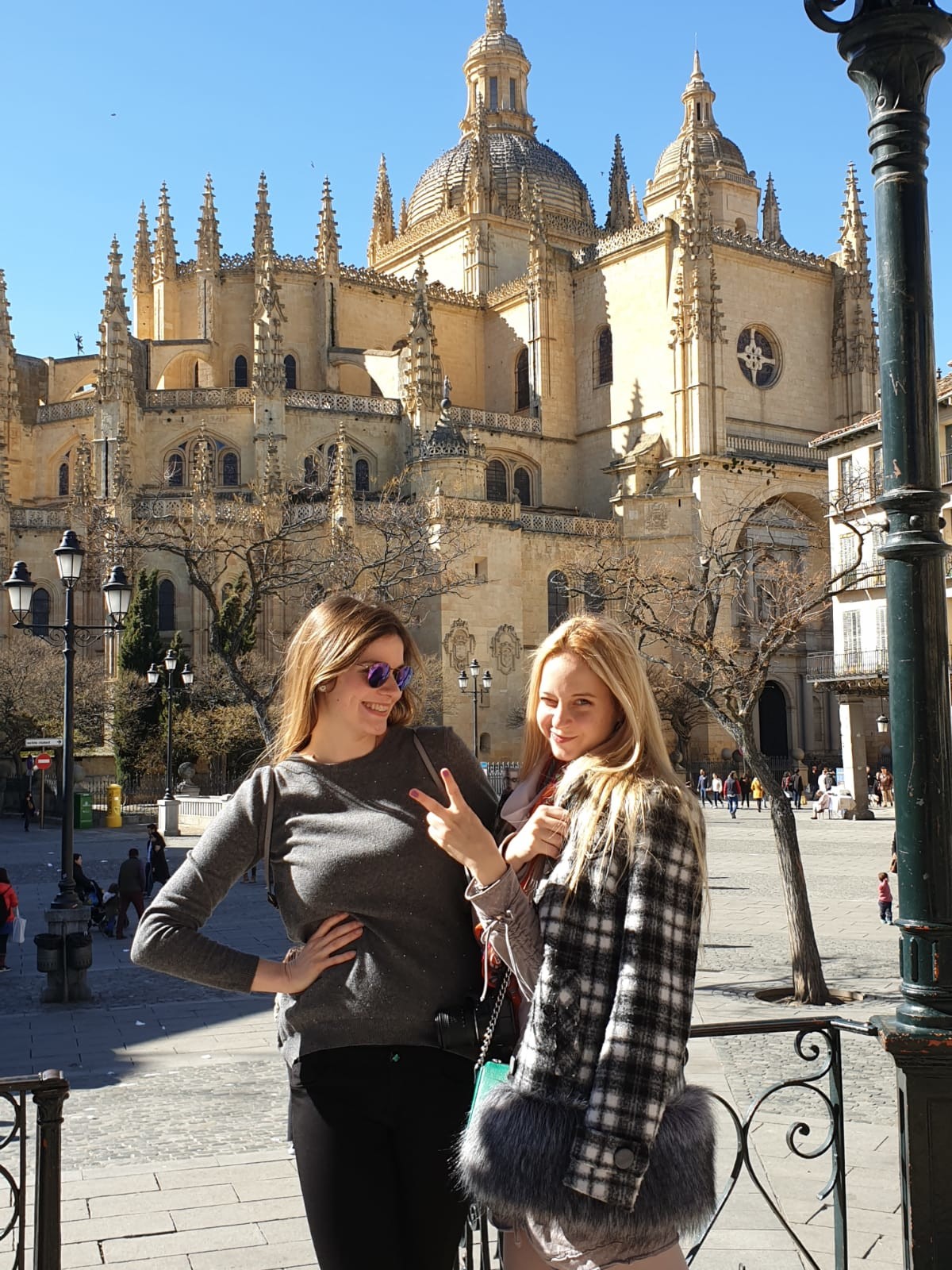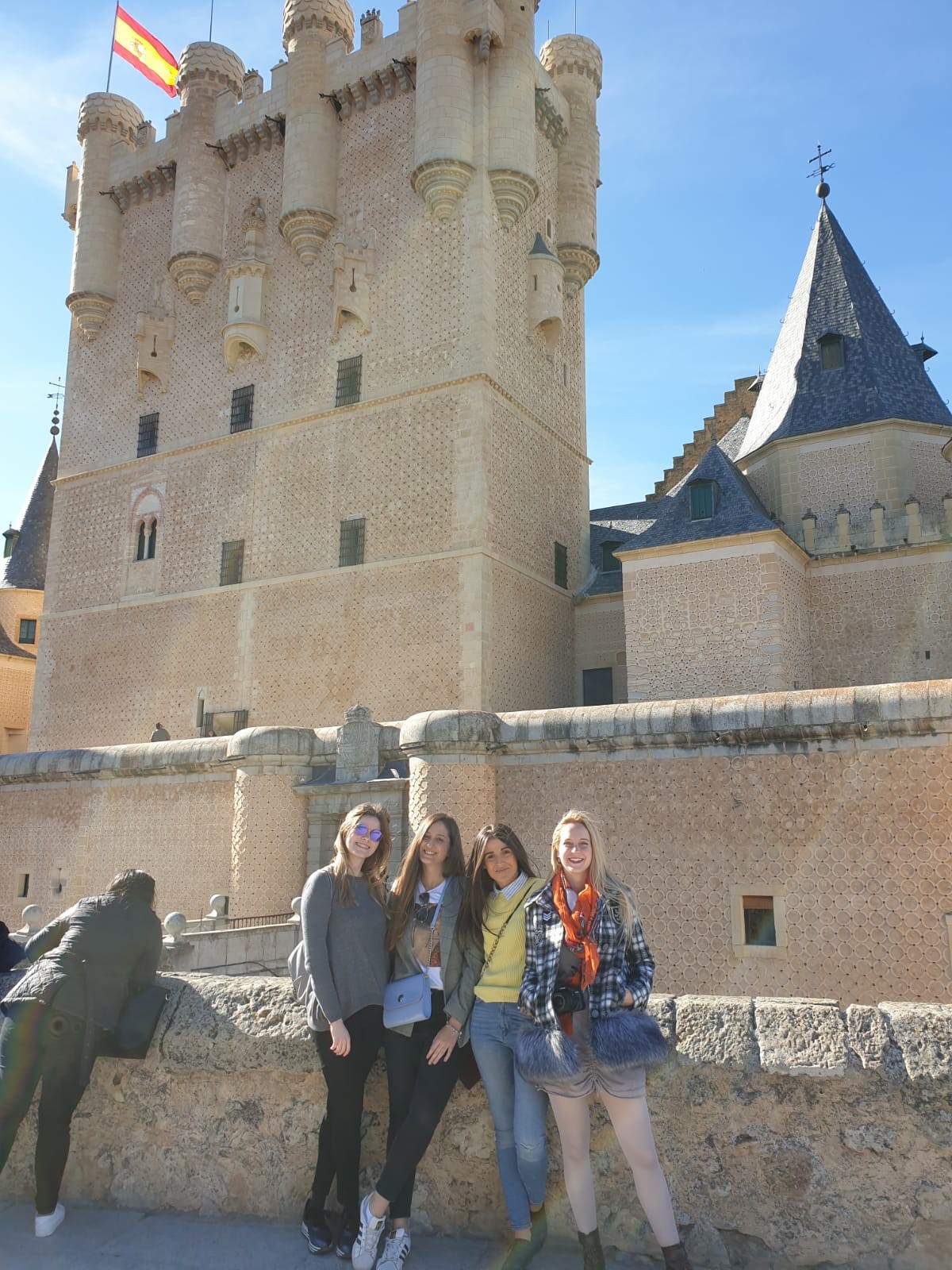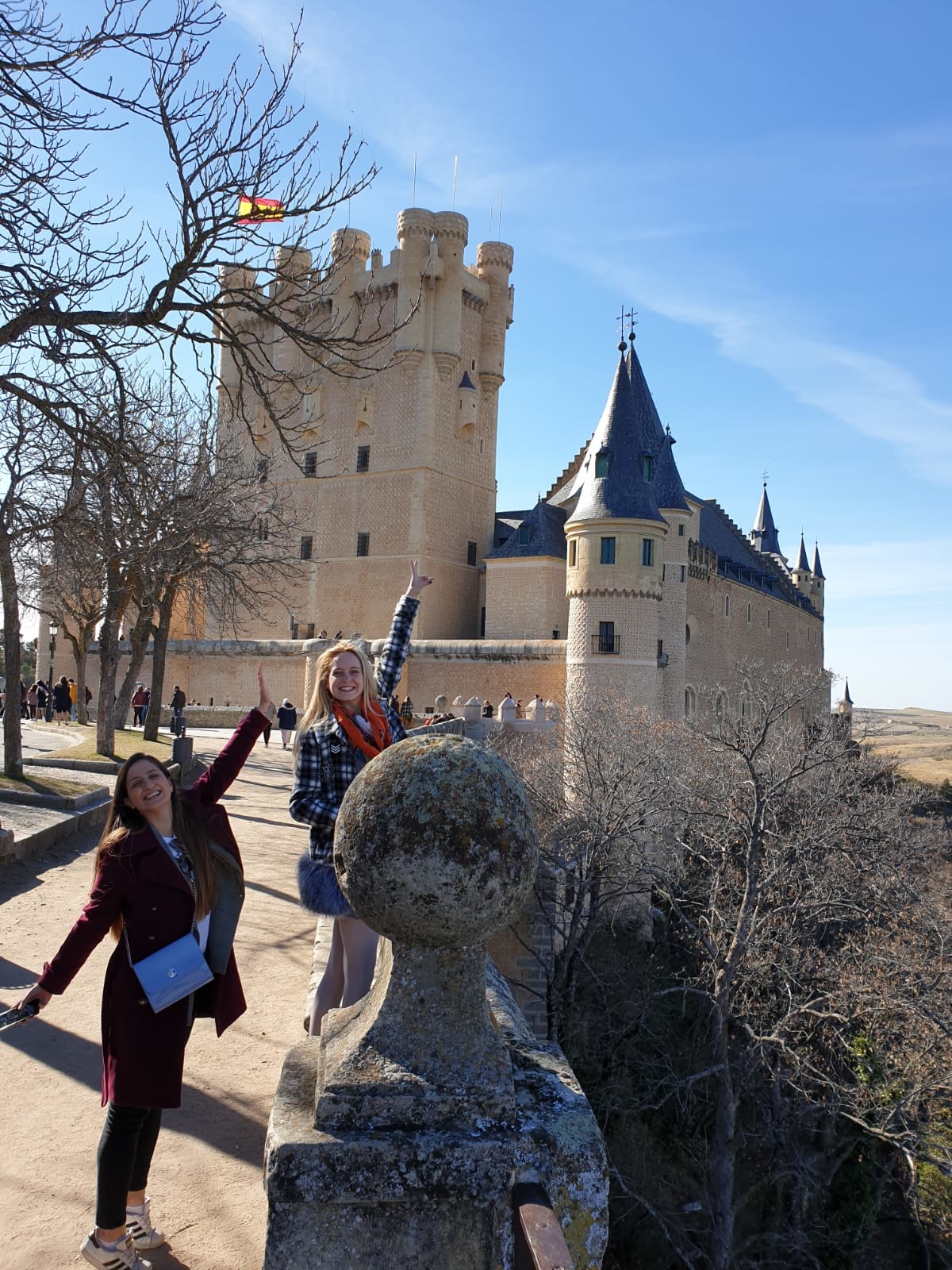Hello guys,
Here is the third weekend in Madrid, now already full of experience about the journeys, we are going through the wall s of beautiful Segovia...

The whole Erasmus family started at 9:40. At the railway station we took the map of the city, and in front of the station we entered the bus 11 to the square Azogue in the center, in front of the aqueduct (the card is 1 €). The symbol of the city, the aqueduct, was built as far back as the 1st century to supply the army with water from the Sierra de Guadarrama Mountains, it is about 14km long and represents the most well-preserved Roman aqueduct. The highest point of the aqueduct is 28.1m and is located on the city square Azogue. On the square, next to the aqueduct, there is another Tourist info. Segovia is a little less crowded by tourists from Toledo, but (at least for us) not less interesting. Walking along the alleyways, we noticed unusual, relief facades that look like bulky wallpapers with various patterns on the buildings.

When we arrived at the square of Major, there was a huge, magnificent cathedral with ornaments like a lace. If we had not seen, we would not have thought that something like this could be placed in this small town.
We continued to the castle Alcazar, located at the end of the old town, and from one of the towers there is a beautiful view of the walls, a panorama of the city with a striking cathedral and the background of Mount Guadarrama. Alcazar was built in the 12th century, on the ruins of the Roman fortress, and until the 17th century it was the residence of the kings of Castile, to serve as a prison, and ultimately a military school. The ticket for the castle is € 4.5, and an additional € 2 for the Juan II tower. From the castle you can see the small church Vera Cruz in the plain outside the old town. There is a tourist bus (about € 6) that runs from the aqueduct and drives around Segovia to the nearby village of Zamarramala, but we did not use it. After visiting the castle, we returned to the walls of the old town where the Jewish quarter is back to the square of Major. Alcazar is a Spanish castle in the city of the same name. The name of the castle originates from the Arabic word al quasar which means the fort or palace, as this part of Spain has long been under the Arab administration. It was only around 1120, after the reestablishment of Christian power, the castle got its shape erected on the remains of the former fortress and has since served as a residence for many Spanish rulers, as is the case today. Several rooms are equipped for royal family members and when they are in a trap, visits to tourists are forbidden. Most likely this caste looks like one from Disney movie Beauty and the Beast :)

Segovia is erected on a large wall of a specific shape so that the front of the castle looks like a deck of a ship. It is located between two rivers, Eresmae and Clamore, so the view from the walls is quite impressive. The castle suffered a fire, several times it was renovated until it took today's appearance, which is partly, mainly when it comes to spherical domes, inspired by the Neuschwanstein castle.
Although it is located in the very heart of Spain, architecture has taken on a lot of influences of the Moorish culture admired even by Christian priests. High ceilings with incredible mosaics sprinkled with golden color take off breath, and beauty is definitely a room symbolically called the half of the sailor, as there is a recess on the ceiling that is associated with half of this fruit. Pillars with deflected arches, also characteristic of Muslim palaces, are found throughout the castle. The room with the throne, the chapel, the armory and several beautifully decorated rooms are open for visiting tourists, which will surprise also the lower level of the castle. Namely, under the castle there is a source of fresh, cold water known as the source of Don Maria de Padilla, which is decorated and built to resemble a luxurious SPA place.
Through the Alcazar of Segovia, a large number of monarchs have passed, not only Spanish but also Austrian , so that the influence of their aesthetics has been endured. Except as the residence of the king and the queen, Segovia served as an archive and military school throughout history, and it is said that this is the castle in which Queen Isabella promised Columbus financial support for his journeys that resulted in the discovery of America. Today this is a fabulous edifice museum and occasionally a resort of the royal family.

Segovia is the city of the province of the same name in the autonomous community. It is located on the Eresmi River, 65 kilometers northwest of Madrid. There are about 55,900 inhabitants. The center of the city, the old town with aqueduct, is on UNESCO's list of world heritage sites since 1985. Segovia is a commercial and tourist center with a developed food and leather industry, as well as the glass and rubber industry. In Segovia there is an Iowa Academy.
Segovia was inhabited even in the era of the Celts, but eventually it passed into the hands of the Romans. In the Roman era, magnificent buildings such as the aqueduct and amphitheater were built, and it was also known in several Latin convoys. During the Moorish invasion, the city was completely abandoned. Segovia was massed by Christians from the north, and even behind Pirineus. Then the city gets important, and its influence spreads over Mount Sierra de Guadarrama and the Tajo River.

Thanks to its position, Segovia became important in the trade of wool and fabrics. At the end of the Middle Ages, Segovia experienced a "golden age" when the growing Jewish population organized a strong industrial fabric production. During this period, many Gothic buildings were created. In 1474, Izabel I. Castilian proclaimed the queen of Castile in the San Miguel Segovian church.
Like other textile centers, Segovia joined the Castilian Commune (Guerra de las Comunidades de Castilla), led by Juan Bravo. Despite the defeat of the rebellion, the city continued its own development, resulting in a population of 27,000 inhabitants in 1594. Since then, the period of secession has taken place, and in the year 1694, only 8,000 inhabitants were recorded. At the beginning of the 18th century, it tried to restore the textile industry, partly successfully, and in 1763 Kaarlo III, the Spanish king, created the Royal Wool Processing Company in Segovia, which he wanted to revive the trade, but it had collapsed in 1779.
God. In 1764, the Royal Artillery School was opened, the first in Spain. The francs were robbed in 1808. during the War of Independence. During the First Carlo War, the army under the command of Don Carlos, unsuccessfully insulted the city.
In the 19th and 20th centuries Segovia is experiencing a demographic recovery that was the result of relative ruling stability. The center of the city is a medieval city on the bank-threatening wall, connected with the modern city below.

The connection with Toledo, Madrid and other royal cities is inseparable. By taking advantage of these cities, we have gained the impression that as if we were moving from one of the residences of kings to another... and so drenched with the scents of history... we are positively tired to go another way... the return in Madrid :)
Don’t forget always to take your tourist guide book with you and explore a little bit before coming in city ;))
With love,
Isidora
